“Digital macht alles kaputt!”
The old lady complained from the other side of the counter, with the mixture of sadness and anger of the one who knows the enemy is so big that the only reasonable thing to do is to step out and wait for the end.
The place, Foto Bahnhof, close to the train station, is one of the last photography stores in Salzburg. After she told me that they did not have what I was looking for any more, I asked her if she knew about other photo stores in the city where I could find it. She shook her head and started listing stores that do not exist any longer. The last one she mentioned, Foto Mayrhofer, close the the Schranne, closed just a couple of months ago, after its owner went into retirement. It struck me that I was in front of one of the last members of an almost extinguished species. Her clear blue eyes darkened for a moment, as she realised that I had understood the bitter consequence of the syllogism she did not fully state.
The advent of digital photography, that reached the general public in the 90s, meant the last push to the democratisation of photography. During the 20th century, photography evolved to come closer and closer to the point & shoot ideal, fine-tuning automatic processes in such a way that the only actions left to the user were framing and shooting.
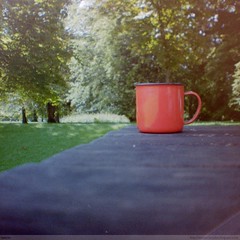
The advantages of a digital camera can be summed up in three: immediacy, low cost and storing and compression. Immediacy on review, because the picture appears on a more or less big screen, with more or less colours, instants after shooting. Low cost of operation because shutter opening and closing has a total cost that tends very quickly to zero. Compression because, thanks to clever algorithms, the optical data captured by the sensor needs a tiny fraction of the total storage capacity of the device, which results in a great autonomy of operation.
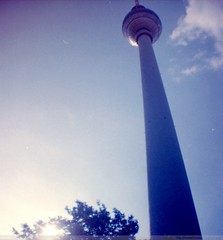
Technological innovation has countless positive aspects, but its ruthless logic leaves old and sometimes venerable technologies on the side as road kill, because they make no sense any more or, simply, because they are not profitable. For example the CD consigned tapes to oblivion, even though there is already an expiration data for the CD itself, whose symphony's last chords can already be heard under the direction of newer digital formats like MP3 and OGG. Digital photography sensors pushed film cameras to the background, making them museum display items or, sadly, mere pieces of junk that one does not know what to do with.
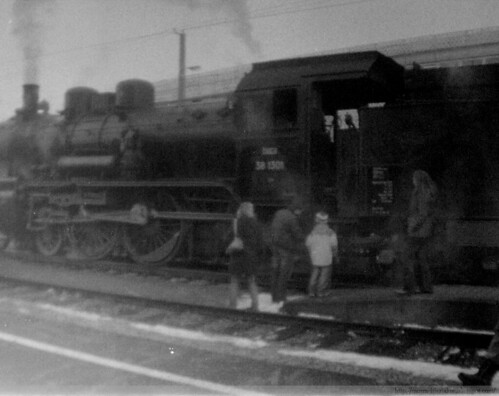
But not all technologies are equal and when a technology, as it happens with photography, is used as a support for artistic expression, I think that it is healthy to renounce to the multiple automatisms and advantages from time to time, because creativity and inventiveness usually work better when the first difficulties to overcome are technical limitations. I think that artistic creativity needs new challenges permanently, in order not to fall into routine and boredom.
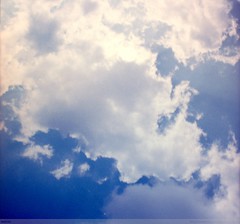
I have worked you through this long introduction just to talk about the new territory that I am beginning to explore, pretty blindfolded at first, but with great hope and motivation. One of the photographic treasures that we brought from New York last year was Marona's new toy camera, a Diana Mini, from Lomography, that uses 35mm film. All pictures that I included in this post until now have been taken with the Diana Mini.

The second photographic treasure, this time brought from Barcelona, is an old camera that we borrowed from Marona's mum, a Kodak Retinette 1A that, after its serial number, was made between 1963 and 1966 and that we let repair and adjust. In spite of the almost 50 years passed, the camera works with a smoothness that a lot of present-day cameras can only wish for.

The Retinette makes you really think: from distance to your subject, which you need to guess and adjust without any confirmation chance, to exposure, for which you have to make use of rules of thumb or the photographic eye that began evolving as we decided to measure exposure manually with our digital cameras as well. I still have not exposed my first film with the Retinette, but I try not to miss any chance...
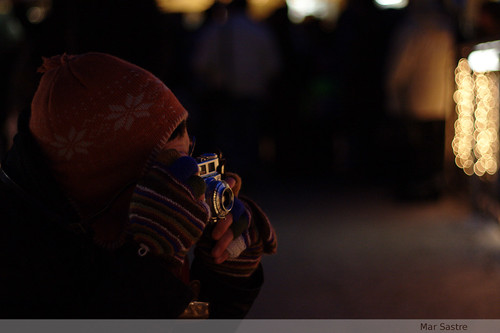
(this lovely picture of me was taken by Marona!)
It is nothing more than another step on my going back to the origin, back to the basics, that I already talked about in a photographic context. I love this feeling of going back to the origin, because I feel like I am doing real photography. Is it maybe vanity? Is it just that I want to stand out from the crowd? I don't know... But I guess the reason I went to Foto Bahnhof, to ask for advice about used twin-lens reflex cameras, gives a hint that what I really like is when people look at me as if I were crazy, as I take out old cameras (with no screen on the back!) from their leather cases and I start taking pictures with them.
Monday 29 November 2010
Photographic Treasures
Friday 26 November 2010
Christmas Season
North America has an unwritten rule: Christmas season does not officially start until the day after Thanksgiving, called Black Friday. Europe does not have such a clear starting shot, sometimes you already can smell Christmas even as early as late September.
We were in New York City the day after Thanksgiving last year. Having not really got over the jet-lag yet, we woke up really early and started wandering around the city at a time were really few people were in the streets, what sometimes was kind of spooky.
We went into Kossar's Bialys on Grand Street, in the Lower East Side. There, sipping coffee and eating an excellent bagel in the kind of environment that could not be farther from the magenta armchairs of a well-known coffee franchise but that, honestly, is exactly what makes New York interesting, exciting and worth living in, we watched the city wake up to the sound of the first Christmas song.
Sunday 14 November 2010
Shyness
Autumn gets closer to its zenith, days are getting shorter and shorter and Nature, as well as people, starts getting ready for the upcoming winter.
The trees, that have been showing us their most amazing colours lately, are stripped bare of all their leaves, silently and calmly.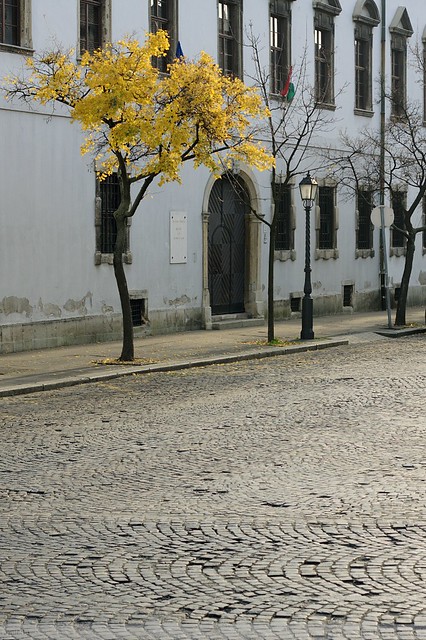
Some, though, are a little shy.
Saturday 13 November 2010
Sunday 24 October 2010
Saturday 9 October 2010
Sunday 3 October 2010
Photo Walk
I went for a photo walk by myself yesterday.
I listened to my favourite accordion street player under the cathedral arches...
I spied on relaxing spots, all pretty with decorative pumpkins...
I saw myself in the future in an unexpected flash-forward...
I discovered the calm of the autumn leaves in spite of the menacing barbed wire...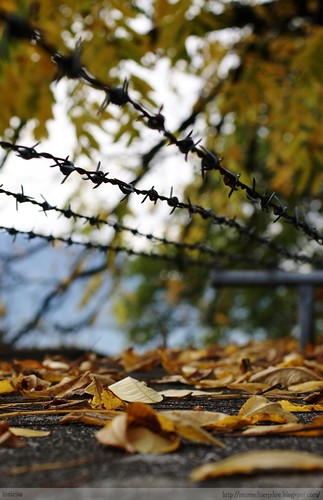
But most of all, I started having fun with our new toy...
Sunday 26 September 2010
Musical rides
This week I did something that I had never done before: I was able to ride my bicycle to and from the office for 5 days in a row, Monday to Friday. Not only do we seldom enjoy such a fine weather for such a long time, it is also very rare for me to get over my weaker self and not to fall victim to any of the numerous excuses at my disposal. I am really proud, I must say.
My ride to the office runs along the Salzach river. For most of the trip I use the bike path, which is a reconverted tow-path, used hundreds of years ago by horses and oxen for towing upstream the boats that, after reaching the salt-mines in Hallein, would be loaded with salt and driven downstream again, to give Salzburg its name (“salt castle”) and to make its prince archbishops awfully rich.
The ride is some 17km long (one-way) and I spend a little less than an hour on it —I am not at all fast! The first two days, especially Tuesday, were quite hard because I got headwind and I was still tired after a hike on Sunday. I got a little obsessed with the cycle computer as well, trying not to do too bad for the statistics. But from Wednesday on, I tried to ignore the computer and simply enjoy the ride.
I realized that there is a kind of physical “in-the-zone” feeling, a delicate and wonderful equilibrium between the force you exert on the pedals and the resistance from wind, road and gravity (slope). That means, there is always a minimum amount of force you have to use in order to maintain a certain pace. The trick is to use just this minimum force, but not more. If you try to keep the pace uninterrupted, by switching gears accordingly, you may be able to run and run with minimal effort and without even realizing the distance.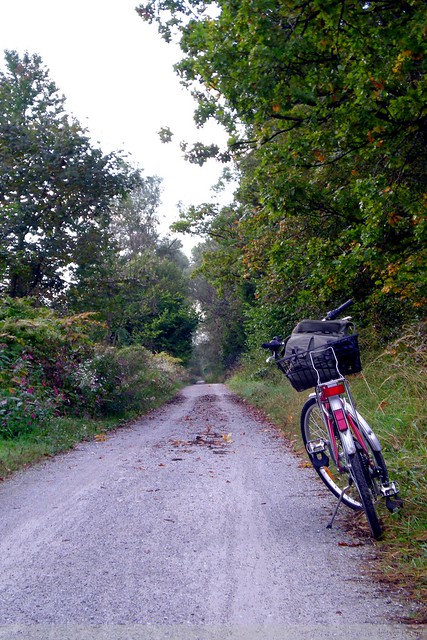
The funny part is that this kind of being “in-the-zone” happens in your mind as well. At least, once I've achieved this equilibrium of forces, my mind seems to become hypnotized by the rhythmic movement and I stop thinking about riding at all and my awareness wanders to other places.
And in this state, invariably, music comes to my mind. I guess it's because the pedalling pace is kind of a metronome that you cannot miss. It's not that I think: Let's sing “Mary had a little lamb”! Songs and melodies simply pop up in my mind. They come and go, without warning, at times switching from one to the other in colourfully wild arrangements that I would certainly not be able to make myself.
This is a selection of some of the melodies that came into my mind during this week's bicycle rides. Interestingly enough, Johann Sebastian Bach seems to have got a stronghold in my brain:
- Prelude from Cello Suite No. 1, BWV 1007, by J. S. Bach
- Variation 1 a 1 Clav., Goldberg Variations BWV 988, by J. S. Bach
- Sinfonia No. 2, BWV 788, by J. S. Bach (listen here)
- Gabriel's Oboe, “The Mission” original soundtrack, by E. Morricone
-
Another composition for two violins by J. S. Bach (I think!) which I can sing but I still haven't found out what it is2nd movement (Largo) from the Concerto for 2 Violins, Strings and Continuo in D Minor, BWV 1043, by J. S. Bach (listen here)
But, without a doubt, this week's winner has been the Prelude from J. S. Bach's Lute Suite No. 4, BWV 1006. Enjoy!
Monday 20 September 2010
Circumzenithal arc?
The (part of a) circumzenithal arc (I think!) that accompanied my bicycle ride on the way back home along the right bank of the Salzach, from Rehhof to Urstein. Too bad that I did not have a camera!
(UPDATED on Sunday, 26th September 2010)
Tuesday and Wednesday I got no luck, but on Thursday, 23rd September 2010, the arc was again there and this time I had a camera with me! :) There are two rainbows at each side of the Sun, separated some 20-30°. Here you can see some pictures of the phenomenon:

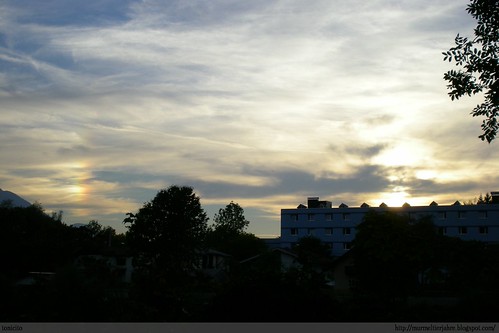
Does anyone know what it is? I don't really think it is a circumzenithal arc... Might them be sun dogs?
Sunday 19 September 2010
Sunday 15 August 2010
Tuesday 27 July 2010
Bus 40
(Sunday, 25th July 2010, around 9:30pm) The sleepy little boy, whose eyes were slowly closing, his head resting on the lap of an elder sister, in front of the tired smile of their mother, on the bus number 40, near Parc de la Ciutadella, in Barcelona.
(this is a new section, "photos I didn't shoot", in which I will be presenting some photographs that I saw but, for one reason or another, did not take; inspiration for this idea comes from www.unphotographable.com)
Saturday 17 July 2010
Tuesday 13 July 2010
Manhattanhenge

Summer solstice sunrise over Stonehenge
(photograph Andrew Dunn, 21 June 2005)
Twice a year the rays of the setting sun align perfectly with the east-west direction of the main street grid in Manhattan. This beautiful phenomenon was aptly called Manhattanhenge, in reference to the alignment of the sun on summer solstice over Stonehenge, by Neil deGrasse Tyson, an astrophysicist at the American Museum of Natural History in New York City.
Today the second 2010 Manhattanhenge is due to happen. You can check out some photographs on flickr.
Maybe someday I'll be able to post my own...
Sunday 4 July 2010
Sunday 27 June 2010
Pennsylvania
In November last year we were walking along West 34th Street in Manhattan, minutes after making our second contribution to the reconstruction of Solomon's Temple. It was on Thanksgiving Day and streets and avenues were still closed to traffic because of the Macy's Day Parade. The view was certainly unusual: pedestrians reclaiming the space that belongs exclusively to motorists all year round.
On arriving to 7th Avenue I looked downtown and saw four US flags back-lit by the sun and, not thinking it twice, I decided to shoot the first picture with the new 50mm lens (new for the third time, by the way...). I like this picture because the relatively dark background lets the flags stand out. A similar effect can be seen in the forest, when the sun creates the illusion that tree leaves possess their own light.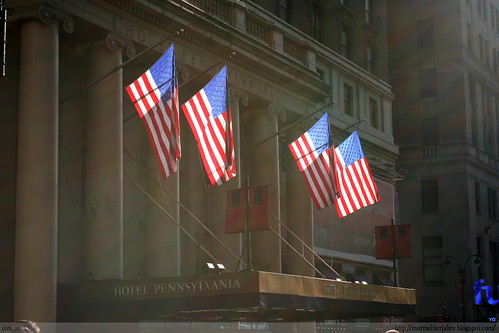
As you can see, those four flags belong to the Hotel Pennsylvania. Months after taking the picture I learned that, without knowing it, I took a picture of one of the many anonymous monuments populating New York City.
The Hotel Pennsylvania main dining room, the Café Rouge, witnessed numerous performances of the most famous big bands of the 40s and 50s, like the Dorsey Brothers, Count Basie, Duke Ellington and the Glenn Miller Orchestra.
Hotel Pennsylvania also claims to have the phone number in longest continuous use in New York: +1 (212) 736-5000. Dialling from the City it would be just 736-5000, and using the usual North American letter code from rotary dial phones, 7 corresponds to P and 3 to E, so it would be PE-6-5000, for PEnnsylvania-6-5000. Which was exactly where Finegan, Grey and Sigman took their inspiration from for the famous song popularized by the Andrews Sisters and Glenn Miller.
I recently read that the Hotel Pennsylvania is threatened by demolition: its current owners, real estate company Vornado, want to replace the 22-story hotel with a 67-story office tower. It is clear that in Midtown Manhattan even monuments are not safe from the real estate voracity...
Friday 11 June 2010
Saturday 15 May 2010
Sunday 9 May 2010
Der Garten an der Salzach
If you walk by the bus stop on Ferdinand-Hanusch-Platz you might see them, sitting on the four metal seats that are their exclusive territory. Or you may see them go into the supermarket opposite the bus stop, to spend the few coins that they got God knows where. Their purchase is usually just cans of beer, the first one of which they are going to open before crossing the first of the two pedestrian crossings they need to cross to make it to the bus stop.
There they are, sometimes quiet and melancholic, at times vociferous and loud, but always silent witnesses of the other side, society's dark side, that let us remember every day about what could happen to anyone of us, in one of those ugly turns that life can take. A fate that is becoming more and more common and from which we tend to look away or, even worse, blame them for their misfortune; them who are the most fragile link of a society for whose smooth running we all are responsible.
Herr G is one of them. His hours pass slowly between the bus stop and the twenty something meters and two traffic lights to the supermarket, making use of his right to one of the four metal seats and observing the passers-by and people who look nervously at their watches as they wait for their bus to come. In the morning you can see him on the other side of the river, pushing an old and rusty shopping cart where he piles all his belongings up. Carefully, quietly, as the city slowly awakes, Herr G parks his shopping cart in a bend of the cycle path below the bridge. If the weather is nice, he sits on one of the benches nearby that, in the end, is the closest thing to a home that he has.
Because Herr G knows that every home needs a garden, and that's why he has taken two small green patches in front of his benches to plant some flowers, to lay out stones geometrically, to align pine cones, to give shelter to a couple of garden gnomes and even to have a colourful windmill. Herr G sits down on his bench, looks at his toy windmill and smiles in the inside before standing up again and going spend the morning at the bus stop on Ferdinand-Hanusch-Platz.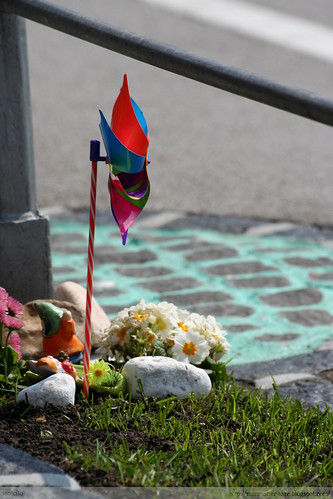
At noon, Herr G will sit down again on his bench and will let the sun warm up his tired joints, staying alert at those two teenagers that are riding their bicycles too close to his garden, ready to scare them away if necessary. Later, Herr G will close his eyes again and will take a nap.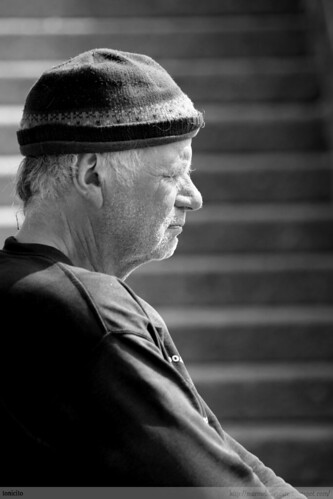
Friday 23 April 2010
Read in 2009
Saturday 10 April 2010
Monday 29 March 2010
Saturday 27 March 2010
Hat
It's funny how something so simple as a hat can change not only your image but your gestures as well...
We had a very windy evening yesterday and, as I was walking home, I discovered myself holding my hat with my right hand as I was crossing the river, fearing the wind would blow it away. And it struck me that I was just mimicking the very same gesture that thousands of men must have inconsciously made throughout the centuries before me.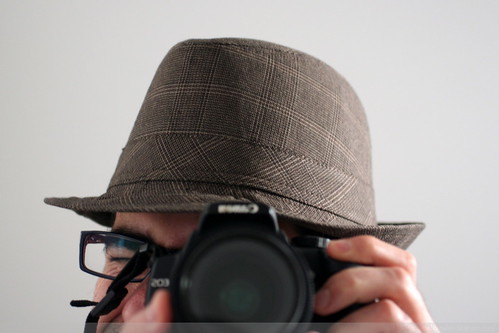 (*)
(*)
All of a sudden, I felt as if I were part of a picture at the turn of the 20th century.
(*) To be honest, I'm not quite sure if my hat is a fedora or a trilby. What do you think?
Sunday 28 February 2010
The Time Machine
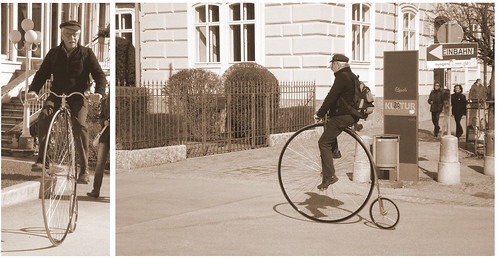
Sometimes you don't really need a time machine to travel back in time, you don't need to risk uneasy encounters with flesh-eating morlocks or being inadvertently trapped inside a mountain.
All you need to do is go for a walk on the river side.
Wednesday 3 February 2010
The Day the Music Died
On February 3rd, 1959, 51 years ago, a small plane crashed near Clear Lake, Iowa. On that day, a solitary cornfield was the only witness to the deaths of three rock and roll legends: Buddy Holly, Ritchie Valens and J. P. "The Big Bopper" Richardson. Later on, others would even call them the Father, Son and the Holy Ghost.
As Holly, Valens and the Big Bopper "took the last train for the coast", an American period was coming to an end, a time of great hope in the future, distinguished by a feeling that everything was possible and within reach, a period of innocent (and maybe even childish) optimism, a period that started with the Allied victory on World War II that would be soon wiped out by the first serious lashes of the Cold War.
Every time that I listen to the music of that period, or I watch American Graffiti, I feel something very close to nostalgia for those times.
Buddy Holly - Everyday
Ritchie Valens - Donna
The Big Bopper - Chantilly Lace
Is it possible to miss something that you never knew?
Tuesday 2 February 2010
Groundhog Day
Today is Groundhog Day.
As an interested party, we from this blog celebrate this beautiful tradition, imported to North America from Central Europe, where it does not exist any more, and we are curious about what do Phil and the others predict for this year: are we going to have an early spring or do we still have to go through six more weeks of winter?
Friday 22 January 2010
Goldberg, Tureck & Gould
I don't use to listen to music at work, but on the first days of 2010 I have been writing a paper and I needed to isolate myself from my colleagues' conversations. At first I started with jazz music but some days ago Mar told me that she took a CD with J. S. Bach's Goldberg Variations from the public library. "Bach, what a great idea!", I thought, because I hold that no music is apter to foster concentration than Baroque counterpoint. After an internet search for the Goldberg Variations I came across Glenn Gould...
The Goldberg Variations (BWV 988)(*) for keyboard were first published on 1741 and are named after virtuoso organist and harpsichordist Johannes Gottlieb Goldberg, who probably was its first performer as well. The work consists of an aria, 30 variations and a reprise of the initial aria. Here you can listen to the delicate subtlety of the aria and a little further to the polyphonic brilliance of the first variation.
Goldberg Variations - Aria
The performer on these two recordings is Canadian pianist Glenn Gould, who is one of the most celebrated pianists of the twentieth century and one of the greatest interpreters of J. S. Bach's keyboard works. Gould was a quite special character. He was born, lived and died in Toronto (1932 - 1982). His playing was quite remarkable in many senses. He used to play the piano from a very low position, so that he pulled down the keys instead of striking them from above. His eyes were just a few inches above the keyboard and throughout his life he would use a special chair, which his father constructed for him. Gould used to move his arms and his body a lot, swaying his torso almost always in a clockwise motion. He usually hummed while playing, having been taught "to sing everything he played" by his mother, and his recording engineers were more or less successful at removing his voice on the studio. In fact, we can clearly hear his humming on most of his recordings.
Gould shied away from physical contact with other people and always wore a coat, a scarf and mittens, independently of the weather, place and season. Before starting playing he would submerge his hands and arms in very hot water for 20 minutes. He gave few concerts, because he disliked the concert hall, considering it kind of a competitive sports arena. Gould always favoured the sense of control and intimacy of the recording studio.
Goldberg Variations - Variatio 1.
Gould developed an impressive speed and technique, which allowed him to do without conventional techniques such as the sostenuto pedal and to precisely articulate the complexly interweaving polyphony of Bach's works. Gould could play at unimaginable speeds and still maintain the separateness and clarity of each note. Even though his repertoire included all the great composers, Gould never tried to hide his aversion for Romantic composers such as Liszt or Chopin, and he even found an intolerable theatrical superficiality on the latest works of Mozart.
Glenn Gould was an exceptional classical piano performer (**). The only influence from a contemporary musician that he publicly acknowledged was that of pianist Rosalyn Tureck (Chicago 1914 - New York 2003). Rosalyn Tureck is, in many senses, the Queen of J. S. Bach's keyboard music. In fact, she is considered by some critics as unjustly eclipsed precisely by Glenn Gould. Interestingly, the version of the Goldberg Variations that Mar took from the public library was Tureck's, in fact the seventh and last recording of this work that she performed in 1998. It is said that after Tureck finished a Bach performance in a concert hall, the public would rest there in silence, unable to move or to clap hands, mesmerized, knowing that something extraordinary had just happened on stage. (This short documentary about Tureck's influence on American classical guitarist Sharon Isbin shows what I mean, around minute 7:30, but it is worth seeing the whole thing)
Listening to Rosalyn Tureck's and Glenn Gould's Goldberg Variations I decided to try to play the piano again, or at least to play it more often, but I guess it's going to be hard to accomplish, because I am at that horrible level where everything I can play is quite boring and the things I would like to play are still way out of my league. A self-teaching person must have a strong willpower, and mine is not the same as it was when I was 15 years old and I started to play the guitar. Moreover, my inability to read music, especially from an F-clef, is not really helping. Anyway, here is my version of New Year's resolutions.
I enjoyed knowing about these two pianists, above all because both had a strong attachment to Baroque music, especially J. S. Bach's. There is something in the polyphonic texture of that epoch with which I associate a kind of return to the origins, renouncing to superficial ornamentations that became fashion in subsequent times. There is something about Baroque counterpoint that attracts me a lot, few musical styles reach so deep into my soul as Bach's. And I think it is just its simplicity, such as the one we find in a bicycle or in a prime lens.
I feel a great tenderness looking at Glenn Gould playing, especially on his latest recordings. Looking at him there, tiny, sitting, like he did all his life, on his chair, worn out by more than 40 years of use, almost hiding behind the piano, delicate, vulnerable. And then, after reaching out for some notes in the air that only he was able to see, he starts playing and extracts the most beautiful sounds out of his piano. Even his humming is pleasant and not at all annoying: sometimes it seems classical music is something wonderful that is on a big big pedestal and that has to be revered, but to me Gould's humming makes a strong point that that is not really this way, and brings us closer to the music others used to stress differences so that everyone can enjoy it.
You can see here the Goldberg Variations in Glenn Gould's recording of 1981. This was the only work of his repertoire that he recorded twice, the first in 1955.
(*) BWV 988 refers to the number on the catalogue of J. S. Bach's works. Now that I can speak German I am finally able to remember what BWV stands for: "Bach-Werke-Verzeichnis", that is, "directory of Bach's works".
(**) One of Glenn Gould's performances of J. S. Bach's Prelude and Fugue in C Major Number 1 (BWV 870) from Book Two of "The Well-Tempered Clavier" was chosen for inclusion on the Golden Record on board Voyager 1, which is now approaching interstellar space and is the farthest man-made object from Earth.

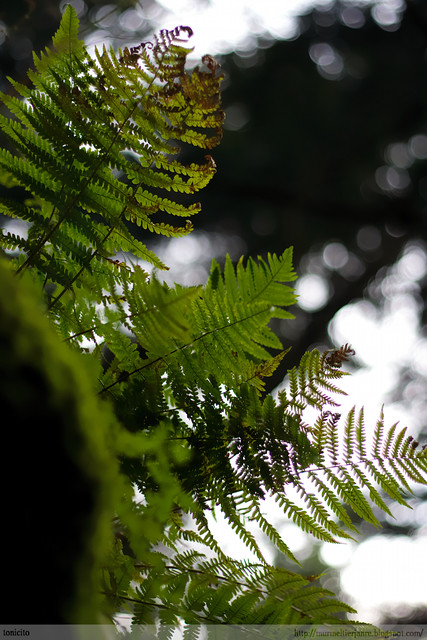
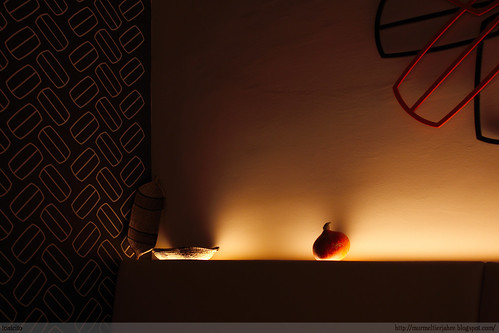
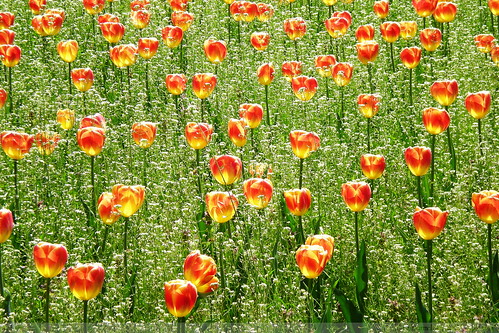












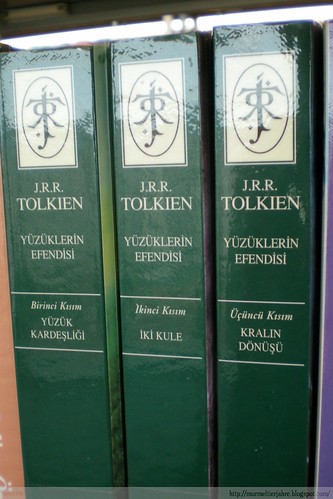
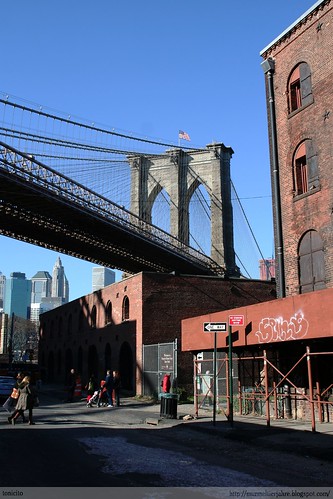
 versión en español
versión en español






